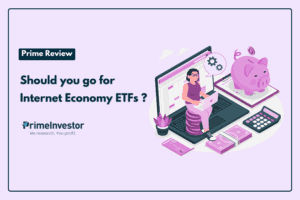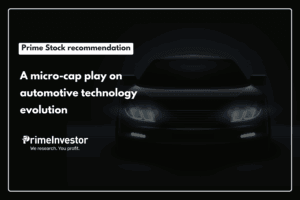The Initial Public Offer (IPO) of UTI AMC is hitting the markets today and will close on October 1. This offer of 3.89 crore shares to the public is made up entirely of sale of shares by UTI’s key shareholders – SBI, LIC and Bank of Baroda. In addition, T Rowe Price International Ltd, a long-standing global investor in UTI and PNB a sponsor, are also selling a small part of their holdings. UTI AMC will not receive any capital infusion from these divestments.

Pros and cons
- Enjoys strong retail franchise, B30 share
- Recent debt setbacks have dented growth/market share
- High equity/hybrid share in AUM makes for decent yields
- But profitability and ROE dampened by high costs, recent AUM setbacks
- Very attractive pricing leaves money on the table
UTI AMC IPO – Offer details
Under section 7B of SEBI’s Mutual Fund regulations, to avoid conflict of interests, no sponsor of an Indian mutual fund can own more than a 10% stake in another mutual fund. SBI, LIC and Bank of Baroda, who have been joint promoters of UTI AMC since its bifurcation, are majority stakeholders in their own mutual funds. SEBI has therefore directed them to reduce their stakes in UTI AMC, with a deadline of December 2020 to comply. In this offer, SBI, LIC and BOB will sell 1.04 crore shares each in UTI AMC to the public, reducing their equity holdings from 18.24% to 9.99% each.
PNB and T Rower Price are using this offer to monetise a small portion of their holdings too. PNB will reduce its stake from 18.24% to 15.24% and T Rowe Price with a 26% stake will divest 0.38 crore shares, to retain 23%. Post-offer, the public will own 30.75% in UTI AMC. The offer is being made at a price band of Rs 552-554.
UTI AMC – Business basics
UTI AMC was born out of the bifurcation of the erstwhile Unit Trust of India, launched in 1964. Apart from domestic funds, it runs Portfolio Management Services (PMS), manages retirement money for NPS and other government entities, and advises offshore funds. CRISIL ranks UTI AMC as India’s second largest AMC based on total money managed, but this is substantially propped up by the Rs 8.49 lakh crore that UTI manages/advises for the EPFO, NPS, ESI, Coal Mines Provident Fund Organisation and other entities.
Based on June 2020 MF assets (Rs 1.33 lakh crore), UTI ranks eighth among Indian AMCs and has a market share of 5.4%. It manages 153 schemes. Challenging markets and hits to its debt schemes have made for muted financial performance from UTI AMC in the last three years.
More than recent financials though, investors need to evaluate the UTI IPO for its long-term prospects. Here are its positives first.
AMCs- an attractive business
Indian stock market investors cannot do without an exposure to financial stocks as they occupy a sizeable weight in benchmarks. But banks and NBFCs carry high risks for shareholders with their high leverage, constant need for capital and need to take on risky borrowers to drive growth. Insurance companies (which have been market darlings lately) also require heavy capital infusion to scale up, resulting in earnings dilution.
AMCs, as pass-through entities which only earn fee-based income are leverage-free. Once capitalised with Rs 50 crore in minimum net worth, an AMC’s assets can be scaled up substantially without either leverage or equity dilution, making a well-run AMC a great earnings compounder.
In India, the business is made more attractive by equity under-penetration, an expanding young workforce and financialization of household savings. CRISIL analysis tells us that Indian mutual funds added 48 million folios to hit 89.7 million folios from FY15 to FY20. Easy accessibility, the emergence of direct platforms that make onboarding a breeze, transparency and anytime liquidity, have helped MFs have emerged as the go-to option for newbie investors. Though Covid will act as speed-breaker to industry growth this fiscal, CRISIL expects a 18% CAGR in MF assets between FY21 and FY25, with a 13-15% growth in AMC revenues and 15-16% growth in profits.
Even if actual growth rates undershoot these optimistic projections, the growing clout of the top ten players and the immense operating leverage in the business are likely to see large players enjoying high margins and ROEs that can deliver strong compounding benefits to investors over time.
Sticky retail assets
UTI AMC’s AUM market share of 5.4% doesn’t do justice to the solid franchise it enjoys with retail investors, especially in smaller cities and towns. In March 2020, UTI had 10.9 million active folios, accounting for 12.2% of the entire fund industry. 43.8% of its assets are retail and over 50% of its equity investors have stayed put for over 3 years. Institutional mandates from EPFO, NPS and other government entities, though generating low fees, help UTI to reap economies of scale.
Retail investors generally make for stickier assets than institutions and are less prone to switch out at the first sign of underperformance. Higher retail assets also endow UTI with greater pricing power and create cross-selling opportunities for future new product or category forays. Significant management bandwidth in the form of a 42-member investment team – one of the largest and most experienced in the industry – allows room to scale assets.
Firm foothold in lucrative B-30
For Indian AMCs, B 30 cities represent an opportunity for higher growth with higher fees, given that SEBI rules allow higher expense ratios for these markets. UTI AMC has a firm foothold in the B30 market with an extensive distribution reach covering 397 B-30 cities apart from the 66 T-30 cities, given it an early mover advantage in districts yet to be explored by its rivals.
Investors from B30 cities accounted for 46% and over 50% of UTI AMC’s equity and hybrid equity assets. Apart from the large number of UTI-owned financial centres (163), these smaller cities are catered to by an IFA network of 53,000 individual distributors. Indian mutual funds have seen growth from tier 2 and tier 3 cities outpacing that from the metros with CRISIL estimating that the B30 share of industry assets rose from 8.3% in FY15 to 12.6% by FY20.
T Rowe Price in driving seat
While most Indian AMCs have one large shareholder firmly in control, UTI AMC has so far suffered from the disadvantage of having to answer to multiple sponsors. With its sponsors featuring not one but four large public sector entities (SBI, BOB, PNB, LIC) , UTI’s growth has been hamstrung by skirmishes between its key shareholders even on fundamental facets such as capital infusion, business strategy and succession planning for leadership.
With three of its sponsors also owning independent AMCs, decision-making has been besieged by conflicts of interest. These impediments have cost UTI AMC dear in terms of flight of CEO/fund management talent and lost business opportunity.
With three public sector sponsors with conflicts now forced to reduce their stakes below 10% and PNB also pruning its stake to 23%, the way will be paved for T Rowe Price the majority shareholder to call the shots on business strategy. After the acquisition of its initial stake in UTI AMC a decade ago, T Rowe price has contributed actively to investment process and governance improvements at the fund house which have delivered discernible performance improvements.
To be weighed against these though, are some negatives.
Sliding market share
UTI AMC has failed to make the most of a strong growth phase in the industry in the last three years, owing to its undistinguished scheme performance. In the past decade, UTI AMC had acquired a reputation for process-driven and conservative management of its schemes which delivered steady returns from its equity and hybrid funds and made its debt funds a popular choice with conservative investors.
The last year and a half, though, has seen this reputation significantly dented with its debt schemes suffering a series of defaults from entities such as DHFL, Yes Bank, Zee Learn and Vodafone Idea. While UTI has not held concentrated exposures, it has created as many as 8 segregated portfolios in its popular debt funds, taking write offs of over Rs 3800 crore. This has resulted in a sharp flight of assets, with the average debt AUM declining from Rs 31800 crore in June 2019 to Rs 19300 crore in June 2020.
The offer document notes that, 106 of UTI’s 108 debt funds accounting for 77% of its AUM have underperformed their benchmarks in the one year to June 30 2020 while 7 of 9 hybrid funds accounting for 84% of its AUM have also trailed benchmarks. Equity funds have managed to fare better with 13 funds accounting for 75% of the assets ahead of benchmarks.
In an industry where short-term performance weighs heavily with investors, these setbacks have cost UTI AMC dear in terms of growth and market share. Despite buoyant equity markets, UTI’s average AUM declined from Rs 1.54 lakh crore in March 2018 to Rs 1.33 lakh crore by June 2020. Its market share too has seen a dip from a peak of 8.2% in FY14 to 5.4% by June 2020. While recent fiascos at other leading AMCs such as Franklin Templeton and modest equity performance from HDFC may see a reordering of these shares, it may take one-two years of sustained outperformance for UTI AMC to rebuild its goodwill with investors.
Another source of threat to UTI AMC’s assets and revenues arises from the large mandates it manages for government entities. UTI AMC’s public sector ownership has helped it fulfil the eligibility criteria for bagging such mandates; but with its public sector sponsors now pruning stakes it may lose this edge. While this may force UTI AMC to rely more on market-driven flows for business growth, it can continue to bid for EPFO and NPS mandates given that both entities also use private sector fund managers.
No bank backing
It is not just performance that decides flows and market shares in the Indian mutual fund industry – hard-sell by distributors matters too. Fund houses backed by large banks have stolen a distinct march over standalone MFs with a battalion of relationship managers actively plugging SIPs to bank customers. This has helped create a flood of inflows into MFs such as HDFC, ICICI Prudential and Axis irrespective of scheme and market performance, helping them rocket ahead of standalone MFs.
The lack of a captive bank distributor will continue to put UTI AMC at a disadvantage over bank-backed rivals. But one hopes that a reduction of conflict of interests with its sponsors post-offer will lead to a more focussed marketing push.
High employee cost
The table below shows that high employee costs to revenues are currently the main dampener to UTI AMC’s PAT margins and its Return on Equity (annualised 14%). The latter is partly due to its large accumulated reserves.
Reasonable equity/hybrid assets
In driving AMC revenues, not all assets equal. Equity and hybrid funds with their high TERs (total expense ratios) yield the most fees (about 100 basis points) as a percentage of assets, followed by debt funds (28 bps), liquid funds (9-10 bps) and ETFs (5-6 bps). The general perception is that UTI AMC commands a lower share of equity assets than its listed rivals HDFC and Nippon AMC. But UTI AMC’s actual AUM breakup is as follows.
UTI AMC does have a large proportion of its assets in passive schemes with low yields. However, besides the EPFO money in its ETFs, the fund house has garnered investor interest in its index funds; making inroads in this growing space early on. We think this gives an advantage to UTI, when the markets favour passive investing at some point.
UTI AMC also has healthy assets in hybrid schemes. The proportion of active equity/hybrid assets in the UTI fold therefore compares quite well with HDFC and Nippon AMC. It is on the absolute size of equity assets however that HDFC AMC towers over both UTI and Nippon. And this is what explains its superior cost structure and profitability.
Not the best sector bet but…
If purely seen from the current growth and market share metrics, UTI AMC may not come across as the best sectoral bet in the Indian AMC space. But as with mutual fund returns, past growth may not be representative of future prospects for Indian AMCs. The decision on whether to invest in this IPO needs to be viewed taking into account the changing investment pattern in mutual funds in India and the market reach, which players are better placed to capture the same and the asking valuation by such players.
On the above counts, the UTI offer is decently placed. UTI compares reasonably well with its listed rivals – HDFC and Nippon on total revenue as % age of AUM, suggesting that it earns healthy overall yield on its assets. Should UTI AMC manage to recoup market share and scale up its assets in the next few years as it recovers from its debt setbacks, it may be able to significantly improve its profitability through operating leverage. Whether seen from a distribution network (for active funds) or its dominant share in the index funds segment, the AMC appears well placed to capitalise on the shifting mutual fund investing patterns in India.
While its recent financials make UTI AMC an iffy bet on the Indian AMC business, it is the very reasonable pricing of this offer that clinches the bet in its favour.
Traditionally, it has been the practise to value Indian AMCs on the Jugaad metric of market cap-to-AUM, based on assumption that the Indian mutual fund industry is in the nascent stages with many lossmaking players. But we believe that with increasing regulation, competitive pressures and the rise of passive assets the industry is maturing fast and a PE-based valuation is more appropriate for players today. We also believe that the other AMCs are set to see more conservative valuations afforded in future.
On this count, at the higher end of the price band at Rs 554, the UTI AMC IPO demands a trailing PE ratio of 25.7 times from investors, while HDFC AMC trades at 38 times and Nippon AMC at about 37 times in the market.
UTI’s offer appears even more attractive on a Price to Book Value basis, with the offer price discounting its book value by just 2.5 times compared to the 11.9 times for HDFC AMC and 6.3 times for Nippon AMC. This pricing leaves money on the table for investors in the UTI AMC IPO.
Please note that our IPO reviews do not consider any near-term listing gains.
As always, here’s our general view on IPOs: https://www.primeinvestor.in/ipos-our-philosophy-and-why-theres-nothing-special-about-them/
Also Read : Who’s the best NPS Fund Manager?





15 thoughts on “Should you subscribe to the UTI AMC IPO?”
One subsribes to IPO in the hope of listing gains and your article had analysed that there is considerable money left on the table as the pricing has been made attractive. Now that the issue petered out, we are told that long term attractiveness is good and that one could buy in the secondary market at discount. Not contradictory ?
One may believe but that is not our belief at all 🙂 Please read the last line in all our IPO call. We clearly mention we do not write calls with listing gains in mind. Nothing has petered out as we did not expect listing gains and do not give calls based on that. thanks, Vidya
Whether UTI AMC can be bough if listing is at discount?
Nice article, even I have similar thoughts that valuation is attractive as compared to peers
Any insights as to why there is subdued response to this IPO in market as compared to other resent IPO whose valuations are much higher
Investors like to buy cos based on recent growth and in this bull mkt don’t mind high valuations. Uti AMC has seen sluggish growth but is priced at low valuations. Hence the muted response.
Thank you Aarti, this helps me give this IPO a miss. Where can we find the month over month AUM’s of AMC?
It’s available on the amfi website under the head AUMs.
Hi Aarati,
Thanks for the clear brief.
To summarise,
1) P/E is lower in comparison to the peers as ROCE & ROE are comparably lower to competitors.
2) -Ve growth rate over the last 2 consecutive years
3) Your view is futuristic provided that UTI has the possibility to revamp post the OFS due to improved control for T Rowe.
Considering the above, do we foresee returns in short term (1 year) holding period? Considering the current pull of investors as the IPO is just 24% subscribed on day 1. Does this indicate that listing might be discounted and provides an opportunity in the secondary market?
Pls share your views
Yes exactly. This is a typical value sort of buy. You buy not because the business is currently attractive but hoping for a turnaround in future. It could offer secondary mkt opportunity
Thank you for the insights
Very insightful thanks
Good ! Gained insight in this IPO .Thanks !
Glad it was useful!
Great stuff, thank you aarati ma’am.
Hope it helped you decide!
Comments are closed.